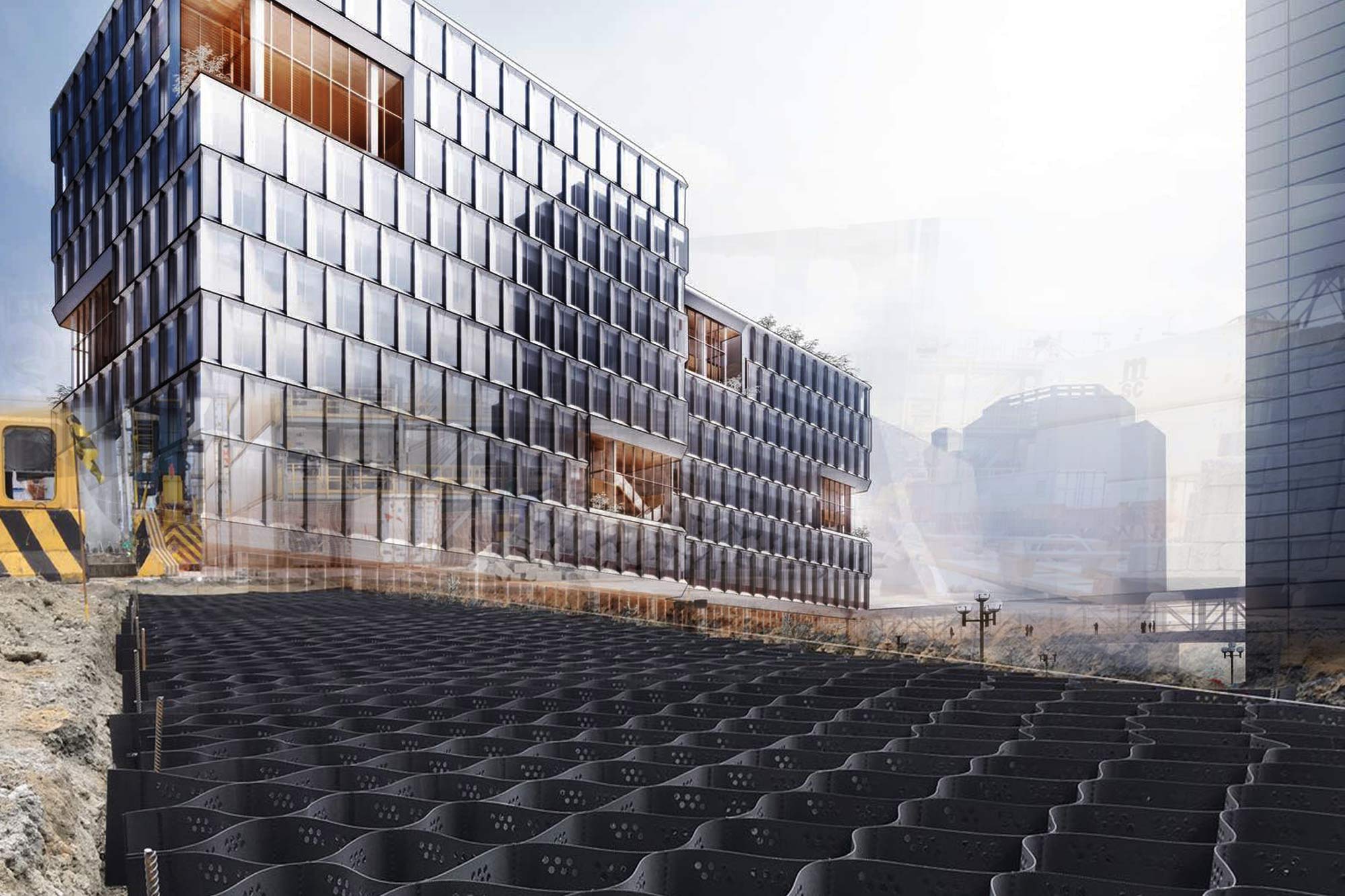Strata Geosystems’ green symphony at Kuber Tila
By Edit Team | February 14, 2024 4:47 pm SHARE

Amidst the divine aura of Ram Mandir, a symphony of innovation and environmental harmony takes centre stage. Explore how Strata Geosystems, in collaboration with TCE, orchestrates a masterpiece of eco-friendly slope management at Kuber Tila.
The Kuber Tila project, nestled within the sacred grounds of Ram Mandir in Ayodhya, serves as a symbol of environmental consciousness and responsible engineering. This small hillock, covering 2.7 acres of land, plays a crucial role in the Ram Van Gaman path, representing Lord Ram’s journey from Ayodhya to Lanka. Recognising the need for slope retention and soil stabilisation without compromising the temple’s aesthetics, Strata Geosystems, in collaboration with TCE, undertook a groundbreaking project that challenges traditional construction methods. This article explores how the Kuber Tila project pioneers ecological solutions using StrataGrid™, StrataWeb®, and StrataDrain™, setting new standards for sustainable construction.
Challenging traditional construction methods
Unlike conventional approaches relying heavily on steel and concrete, the Kuber Tila project embraces innovative geo-engineering solutions. The 12-meter-high slope utilises three geosynthetic products – StrataGrid™, StrataWeb®, and StrataDrain™ – effectively replacing traditional materials while matching the strength of steel and concrete. Geosynthetics, consisting of polymers designed for construction purposes, offer a sustainable alternative by stabilising terrain through porous structures.
Strata Geosystems, a leading manufacturer of geosynthetic products, played a pivotal role in deploying state-of-the-art materials. Notably, StrataWeb® geocells made of high-density polyethene form a framework that stabilises the soil, preventing landslides and erosion. The innovative use of these cells enhances the structure’s strength and allows for vegetative growth between them, significantly reducing the carbon footprint and conserving natural resources.
Innovative geo-engineering techniques
Three geosynthetic products were strategically employed to address the project’s soil stabilisation, slope strengthening, and water draining requirements. StrataGrid™ geogrids act as the primary reinforcement, offering exceptional tensile strength and high molecular weight for vertical and horizontal soil reinforcement. StrataWeb® geocells of high-density polyethene create a stable framework, and StrataDrain™ handles efficient water drainage. This combination of products provides a comprehensive and effective solution to the unique challenges the Kuber Tila project poses.

Promoting sustainability and reducing carbon footprint
The Kuber Tila project goes beyond merely replacing traditional materials; it promotes sustainability and reduces its carbon footprint. The vegetation growth within the geocells and on StrataWeb® fabric fosters biodiversity and mitigates the urban heat island effect. The incorporation of vegetation acts as a natural carbon sink, offsetting emissions generated during construction. Furthermore, sustainable construction practices minimise soil erosion, protecting the local ecosystem and preventing sedimentation in nearby water bodies.
Over time, the Kuber Tila project aims to become a carbon-negative site through the planting of a diverse range of trees, including Mesua Ferrea, Nyctanthes arbor-tristis (Harsingar), Butea monsperma (Dhak), among others. This commitment to sustainability sets a precedent for future construction projects and positions the Kuber Tila project as a model for responsible engineering practices.
A model for sustainable construction
The success of the Kuber Tila project highlights the potential of sustainable construction practices. The project pioneers a narrative of responsible engineering that prioritises environmental health by integrating innovative geocells, geo-textiles, and geogrids. Strata Geosystems’ global leadership in geosynthetics and its commitment to showcasing the power of eco-friendly engineering underscores the significance of interdisciplinary collaboration between engineering and sustainability experts.
The Kuber Tila project at the Ayodhya Ram Mandir transforms the landscape and serves as a beacon for future sustainable construction initiatives. Its holistic approach demonstrates that large-scale construction can be carried out while minimising environmental impact. This project is an inspiring example, emphasising the importance of collaborative efforts in advancing sustainable construction practices and setting a new standard for the industry.
Cookie Consent
We use cookies to personalize your experience. By continuing to visit this website you agree to our Terms & Conditions, Privacy Policy and Cookie Policy.































-20240213125207.png)

























